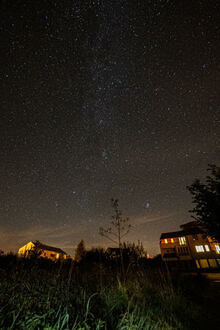- Featured
- Animal Rights
- Anti-racism
- Arts & Culture
- Children
- Climate
- Corporate accountability
- Crime
- Disability rights
- Economic
- Education
- Environment
- Food and Sustainable Production
- Gender Equality
- Governance and Transparency
- Health
- Housing
- LGBT Rights
- Mental health
- Northern Ireland
- Planning
- Privacy and Data Protection
- Rural Inequality
- Social Justice
- Trade
- Transport and Infrastructure
- Workers' Rights
- More
-
Demand Government Subsidies For EV Conversions In IrelandIreland has repeatedly missed its greenhouse gas emissions targets and, with the transport sector accounting for 20% of the nation's CO2 emissions, switching to electric vehicles represents a great opportunity to cut emissions quickly. This also has the benefit of reducing air pollution, which will benefit public health, while the cheaper running costs will help many who are already struggling due to the Cost of Living Crisis. At present, incentives are only available for brand new electric cars - which makes them unaffordable for the majority of people. This is also delaying an affordable second-hand EV market, which needs to be prioritised if the majority of people are to be able to make the switch. A key mantra for tackling the Climate Crisis is doing more with less. Converting petrol, diesel and hybrid cars to run as full EVs is a great example of this – as it takes cars that run perfectly well, but which have high and harmful emissions, and delivers all the benefits of electric cars – such as lower running costs and no air pollution – at an affordable price. We have previously seen the Irish Government offer scrappage schemes for cars – but this has come at the cost of a lot of metal, plastic and oil waste. By funding EV conversions instead of supporting scrappage schemes, the Government can not only avoid unnecessary waste, but also help to keep natural resources in the ground by effectively recycling the cars that we already have. The French Government has made EV conversions available for a price of just €5,000, which is a much more realistic entry point for most people in Ireland. Especially during a cost of living crisis56 of 100 SignaturesCreated by Tom Spencer
-
Introduce a statutory maximum working temperatureHot weather can make work unbearable and with record temperatures likely to be a trend in Ireland, we should introduce a statutory maximum working temperature after which employees are sent home.11 of 100 SignaturesCreated by Harvey McDermott
-
Save the MangalaOur beloved Mangala is a unique area of woodland in the heart of Douglas. It's an area of natural beauty and is full of biodiversity including many protected species. The destruction of natural habitats and mature woodland is not acceptable. The Mangala is also of huge historical importance because of its close connection with Morough Mills. The Mangolds, locally called Mangles, that gave it its name were grown there to be used in the mills. The woods is a haven that generations of us have enjoyed and continue to do so. The people of Douglas won't stand for this. We won't allow the destruction of OUR Mangala3,122 of 4,000 SignaturesCreated by Nina O'Neill
-
Stop Live Export!Long-distance journeys cause unnecessary suffering to animals. They can become exhausted, sick and injured, hungry, dehydrated and stressed, having to cope with high temperatures and humidity and extensive periods in cramped, filthy conditions, sometimes with little or no food and water. Every year thousands of young bulls are exported to countries outside the EU including Turkey, Libya, Lebanon and Morocco. As if that wasn’t bad enough this year new markets have been sought and shipments have gone to Jordan and Egypt. A trade deal with Israel has also been ageed for cattle and sheep. THIS IS GOING IN THE WRONG DIRECTION! These are all countries with no or minimal animal welfare regulations in place and appalling standards, particularly at slaughter. These bulls are subjected to unimaginable suffering, crammed into hot, filthy vessels for up to two weeks, usually just to be slaughtered in a brutal manner shortly after arrival at their destination. Slaughter methods in these destination countries include slashing tendons, stabbing in the eyes, being strung up by a rear leg, multiple slashes at the throat, being hit over the head with poles, all whilst fulling conscious and in front of other animals. The slaughterhouse workers have a lack of education, and training, lack of facilities, there is no vet present and there is little in the way of legislation. Street slaughter is common. We are calling for the Minister to ban export to all countries outside the EU that do not share our welfare standards, both in documented legislation and in practice. You can find out more about the industry here: https://www.ethicalfarmingireland.com/live-export/6,664 of 7,000 Signatures
-
Free Public TransportPart of our climate change goals & ambitions.1,556 of 2,000 SignaturesCreated by Cormac McKay
-
Tell Sinn Féin to oppose petroleum licencing at the ExecutiveFracking and drilling pollutes our water, and damages our health. It is expected that the petroleum licencing policy that Minister Lyons will propose to the Executive could open the door for the approval of outstanding drilling and fracking applications in Fermanagh, and in the five council areas of Belfast, Antrim and Newtownabbey, Mid Ulster, Armagh City Banbridge and Craigavon, Lisburn and Castlereagh. There is no time for legislation to be passed on fracking and drilling in this Assembly term. It must be stopped at the Executive.563 of 600 SignaturesCreated by Nicola Browne
-
Protect the Limerick GreenwayThe Limerick Greenway, which opened in July and cost €10M euros, is now the most successful greenway in Ireland with over 250K visitors already. The greenway traverses a green plain under Rooskagh Hill. This region has huge potential for tourism and could create a multiple of the estimated 200 jobs created in Mayo on the back of their fabulous greenway. It is similar in size to Limerick and visitor numbers are comparable. A dual carriageway through the plain and the greenway will stunt any further growth in amenities and jobs. We believe Limerick County Council; Transport Infrastructure Ireland and the Department of Transport have chosen it not because it is the best route to alleviate traffic congestion in and around Newcastle West but purely because they think that it is achievable in the time frame that they must spend the funds promised and also allows them to circumvent future restrictions from the EU in relation to climate control. We want to raise awareness of this flawed decision and try and reverse it before it is too late. The process to date has evolved side by side with the Covid pandemic and the authorities have been able to move swiftly without entertaining any real democratic questioning. Zoom calls with pre-prepared scripts has been the order of the day. The whole planning, implementation and engagement of this process has been rushed and expedited. Most local politicians appear to be repeating the same mantra as the council and there is a clear democratic deficit here. It is left up to ordinary citizens to voice their concern through the media and other channels such as this petition. https://www.facebook.com/protectlimerickgreenway [email protected]444 of 500 SignaturesCreated by Limerick Greenway
-
Support Youth Demands for Climate JusticeThe more young people who sign in support, the more we can pressure our decision makers to implement these demands.632 of 800 SignaturesCreated by Theresa Rose Sebastian
-
COP on - stop letting big business destroy our climateBig business are producing more, not less emissions and are making the climate crisis worse. Government decisions are letting them off the hook and pushing the burden for the climate crisis on to regular people, not the corporations who drive it.17 of 100 SignaturesCreated by Patrick O'Brien

-
A WORLD WITHOUT WAR82% of the Irish people support neutrality in all its aspects.127 of 200 SignaturesCreated by Margaretta Darcy
-
BioDiversity Impact of light Pollution- Submission to Tipperary County CouncilWe need your support: Please sign the petition below! Finding it hard to sleep at night with light glare from street lighting coming into your bedroom? The County Council are going to be upgrading the current street lights in Cloughjordan village and will soon consult with the local community on the type of new lighting arrangements to install. This is your chance to have the kind of lighting you really want installed in your village. We aim to submit a letter to the County Council on behalf of people in the local community, to request that the Council: - Install lights with a warm (Amber) colour temperature with an upper limit of (no more than) 2700 kelvin. - Install light shields or hooded lights with more focused lighting, (thereby improving security by reducing glare through targeted lighting and reducing the impact of light pollution). Why are we making the above request? There is an opportunity here for Cloughjordan village to get smart, modern, high standard, well-designed lighting installed that reduces glare into our houses and bedrooms and yet still keeps our streets safe at night. The right kind of well-designed lighting can help reduce light pollution, helping to protect our health and that of the environment. The upper brightness limit we are asking for will be similar to the existing brightness level of the current sodium lighting on the main street but will have a softer effect as the new lighting will be LED, where 2700 kelvin is on the warmer scale of lighting. Also, if the lights are shielded, as we are requesting, the light is targeted to the ground where it is needed, and doesn’t get wasted in glare. This has been shown to improve security by eliminating the excessive glare that often ‘blinds’ people looking into overly bright street lighting. The truth is that better design equals better and safer lighting. Why be concerned about light pollution? Light pollution is Harmful for our health: Current scientific studies suggest that artificial light at night negatively affects human health by increasing our risks for sleep disorders, depression, diabetes and more. It is proven that artificial lights directly interrupt our circadian rhythm. Circadian rhythms are 24-hour cycles that are part of the body’s internal clock, running in the background to carry out essential functions whilst we sleep: the sleep-wake cycle. Some of these processes include brain wave patterns, hormone production, cell regulation, and other biologic activities. Disruption of the circadian clock is known to have a significant correlation to several medical disorders in humans including depression, insomnia, cardiovascular disease, and cancer. Light pollution is harmful to nature: Plants and Animals depend on earth’s daily light and dark cycle to govern life-sustaining behaviours. For hundreds of millions of years, the web of life on earth has been dependent on day and night, light and dark. Research shows that artificial light at night has adverse and even deadly effects on many species. Researchers have already identified harmful impacts on a huge array of species including bats, insects, plants, fish, turtles, marine corals and even primates. Overlighting wastes energy we can’t afford to waste: It is estimated that at least 20% of light is wasted by unshielded and/or poorly aimed outdoor lighting which is about 3 billion euros per years’ worth of energy lost in sky glow. As much as 50% of outdoor lighting globally is wasted, which increases greenhouse gas emissions, contributes to climate change, and renders us all energy-dependent. To offset all that carbon dioxide, we’d have to plant about 875 million trees annually!15 of 100 SignaturesCreated by Darksky CloughJordan
-
Practical Cooking Classes For Every Child in the School CurriculumNo Irish child should leave school without being able to cook for themselves. Otherwise, we are undeniably, failing in our duty of care to our young people. When you teach someone how to cook, you give them a gift that will forever enhance their lives. Our food choices affect our energy, vitality, ability to concentrate. Food affects our mental and physical health and is at the heart of the fight to tackle the climate crisis.6,848 of 7,000 SignaturesCreated by Darina Allen



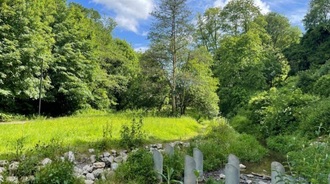
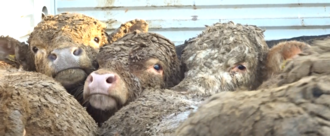
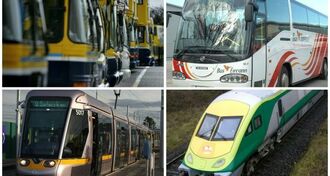.jpg)

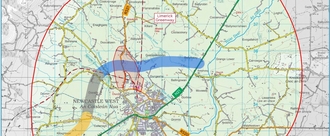
.png)


